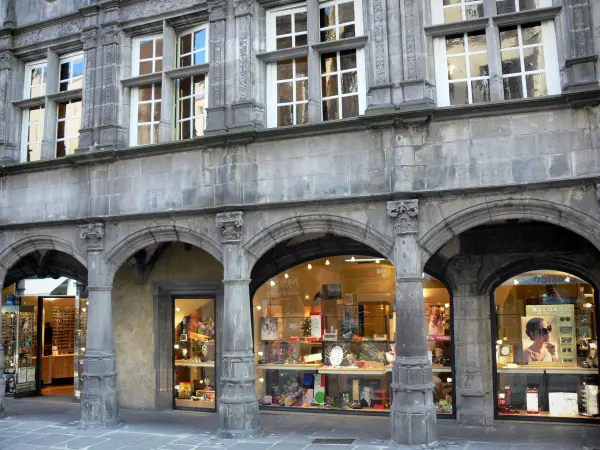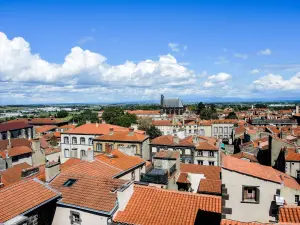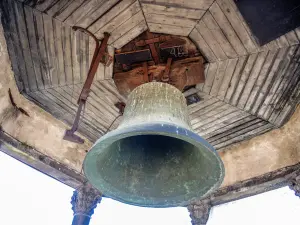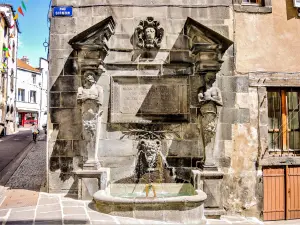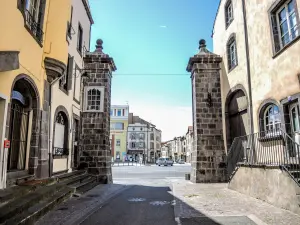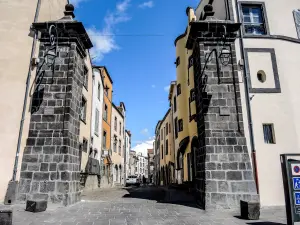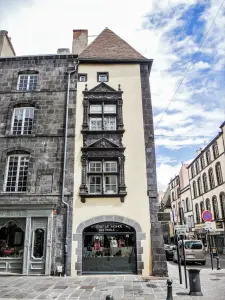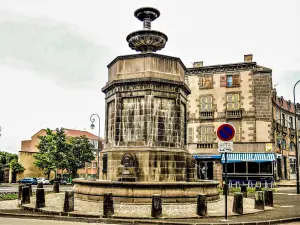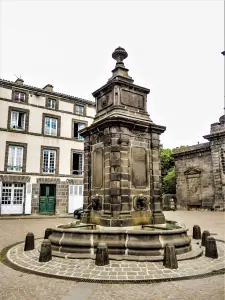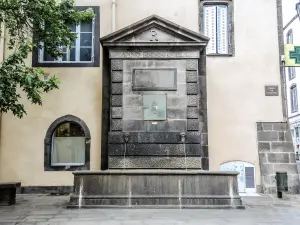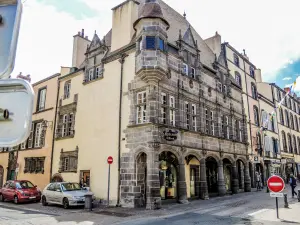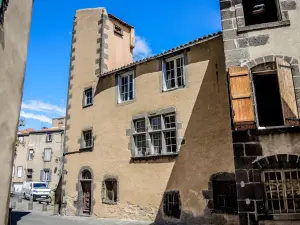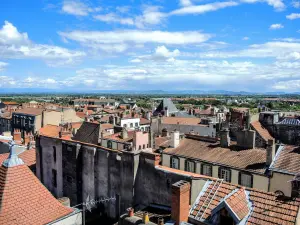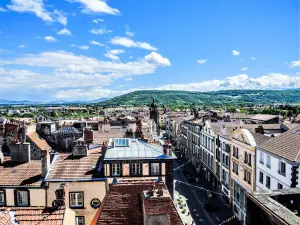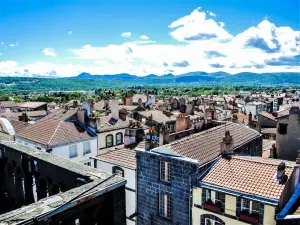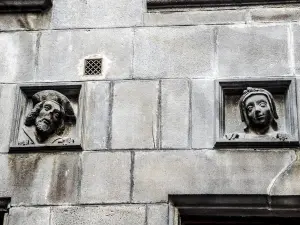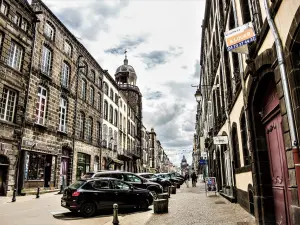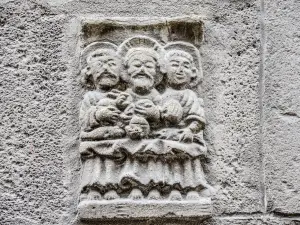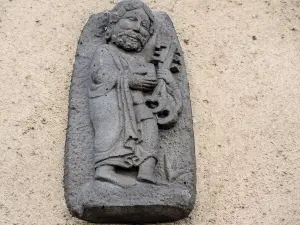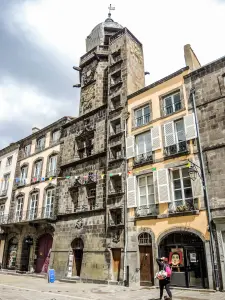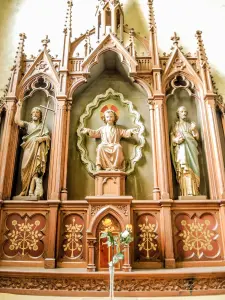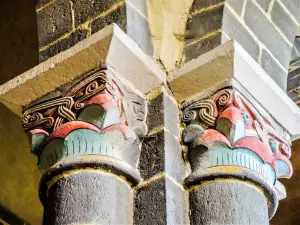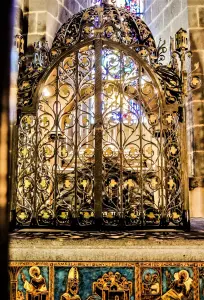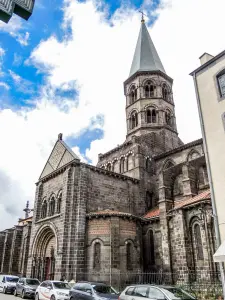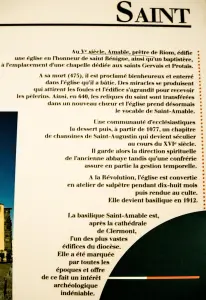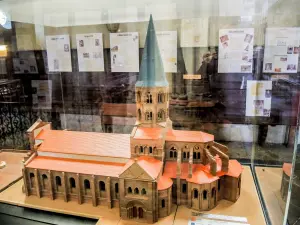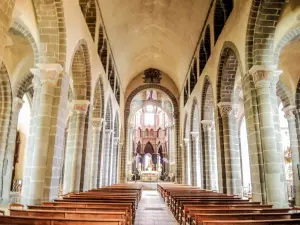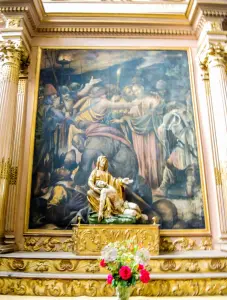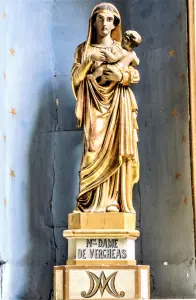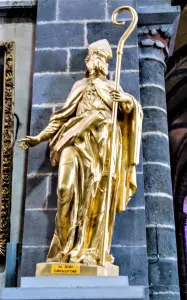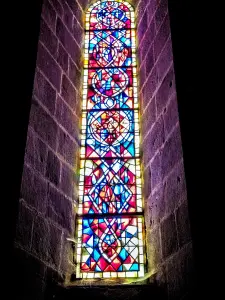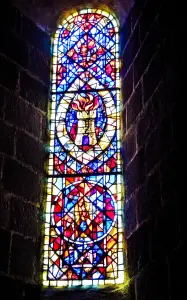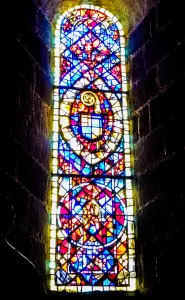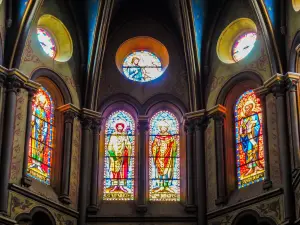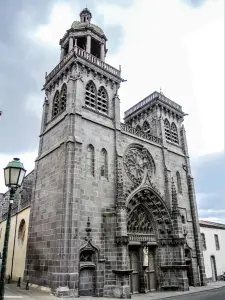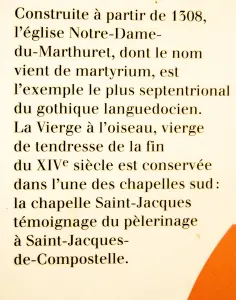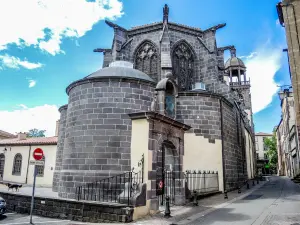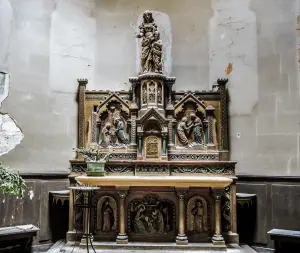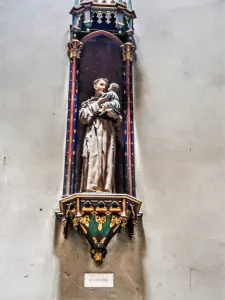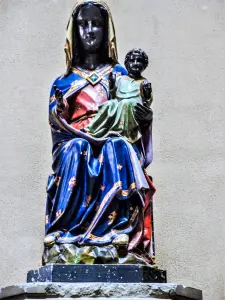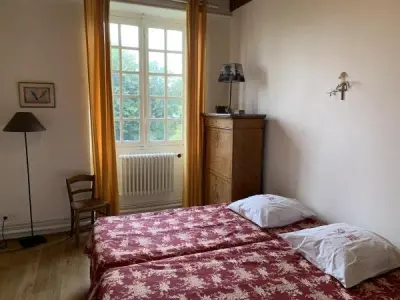Municipality of Puy-de-Dôme, Auvergne, Riom is part of the urban area of Clermont-Ferrand. Third city of the department, it is ideally located between the chain of Puys and the famous plain of Limagne.
Historic capital of Auvergne from the XIIIth century, Riom was classified protected area and designated city center of the country of art and history of Riom in the mid-2000s. Rich of an exceptional heritage of which many elements are classified as Historical Monuments or the inventory of Historic Monuments, the city is full of sites to discover that recall the important hours of the city auvergnate.
Elegant, the city knows no less festive and colorful events throughout the year, appealing to lovers of history, as lovers of friendly and warm party.
Its geographical situation, not far from the waterfalls of the gorges of Enval, also gives it an excellent reputation for its landscapes and its excursions through a green and preserved nature. Hard to resist the call of volcanoes and the royal history of Riom!
A few kilometers north of Clermont-Ferrand, its big neighbor, on the edge of the chain of Puys on the edge of the plain of Limagne, the area of hills where Riom developed plays very early an attractive role for men as proven by the discovery of prehistoric material. The menhir of the Varenne, like any megalith, testifies to the influence of man on nature and undoubtedly marked the limit of a territory bordering the old marsh and perhaps also had a religious function.
In the Gallo-Roman period, the Arverne village of Ricomagnum, economic center with important commercial functions becomes Vicus Ricomagensis enjoying an advantageous position on the Claudia route linking Augusto-Nemetum (Clermont-Ferrand) to Avaricum (Bourges). Riom is then an agglomeration with agricultural vocation without fortifications known which will become at the end of the IVth century the seat of a vast primitive parish. No vestige of this period is visible in the old city but the Gallo-Roman settlement is attested by the presence of villae in the nearby countryside.
The city of the High Middle Ages protected by a county castle, is centered around an ecclesial group, founded in the fifth century by Saint-Amable. Then the existence of a pilgrimage on the saint's relics increases his fame and gives rise to his development.
In the 13th century, to these economic and religious functions is added the prestige of an administrative and judicial center when Riom is chosen as the capital of the Royal Lands of Auvergne. Then two good times opened, those of the appanages of Alphonse de Poitiers (1241 - 1271) and Jean de Berry (1365 - 1416). The first modifies its topography and gives it its current frame that unites the original urban core to the new castle further east. The second, Jean de Berry, built the ducal palace and the Sainte-Chapelle.
After the privilege of the Bourbons (1416 - 1527), Riom returns to the crown. It is the seat of the royal courts.
In these times of urban change, the power of the bourgeois is confirmed by the franchise charter (1270). They build in the heart of the city, the belfry (1391) to house the consular bell and the jacquemart offered by Jean de Berry. The buildings present a rather complete panorama of the art of the Middle Ages as the Romanesque architecture of the Saint-Don Chapel, the late Romanesque and the early beginnings of the Gothic of the north of the Saint-Amable abbey and the flamboyant Gothic rub shoulders Sainte-Chapelle also known for its windows. Notre-Dame-du-Marthuret church is the northernmost example of the Languedoc Gothic and preserves the statue of the Virgin to the bird. As for civil architecture, rare remains of bays or arches can imagine some beautiful stone houses. As for the wooden house, it is the only evidence of this type of medieval habitat disappeared during the fires of the late fifteenth century.
The Renaissance is marked by a renewal of buildings after the earthquakes and fires of the fifteenth. The mansions, built in stone of Volvic on a parcel of land in lanyard, still medieval, offer to the nobility of dress and the bourgeoisie a framework of pleasant life with the gardens. The care given to the decor of the courtyards, and sometimes the facades, testifies to the urban development. This is the case of the hotel Guymoneau with its Ascension and its cardinal virtues, the house known as "consuls" with its medallions and, later, the Arnoux Hotel Maison Rouge with the leather of its oculi. The privileged condition of its sponsors asserts itself in the magnitude of the proportions as in the hotel de Cériers (current Hôtel-de-Ville). While the district Saint-Jean reveals a more modest habitat related to the tannery with the house known as Antoine Pandu and the house of the craftsman.
After the great plague of 1630, the streets come alive and s'emmaillent fountains: fountain of Adam and Eve. The wealthy bourgeoisie attains the nobility of dress thanks to the system of the venality of charges and builds hotels characterized by a classic sobriety. The canons of Saint-Amable endow their church with remarkable woodwork (1687).
In the eighteenth century, the initiative of individuals is crucial in the evolution of the urban landscape. Depending on their fortune, they build mansions between courtyard and garden on the Parisian model such as the hotel Dufraisse du Cheix (nowadays Mandet museum) or simply redo the building on street as the hotel Arnoux House Rouge. However, in most cases, false gutter walls are plated on the gables. They mask the structures and unfold along the streets like a stage set.
At the Revolution, the city loses its title of capital. Supersed by Clermont, Riom, now sub-prefecture, lives in its own fold. But during the nineteenth century, as to show the rooting of justice in the city, we choose Riom (1804) for the construction of the Court of Appeal on the symbolic site of the ducal palace, place of power and courts since Francis I. For this building (1824 - 1848), the architect Degeorge, student of Percier, is inspired by the Roman palaces of the Second Renaissance and especially the Farnese palace. The complex that incorporates the Sainte-Chapelle, is the only large site of the old center where the houses of the nineteenth century are rare. They rise in the shade of the trees on the crown of the boulevards. In the eastern districts, the tobacco factory (1883) presents a fine example of industrial architecture. The second half of the century also saw the founding of the museum (1859) by Francisque Mandet, which together with the Society of Friends of the Museum, constituted an interesting collection of amateurs.
The beginning of the 20th century bears the imprint of Etienne Clémentel (1904 - 1935) with the restoration of the Hôtel de Ville, the construction of the post office (1913) and social housing such as the city Clémentel (1933).
The city of today is facing its extension and in parallel with this urbanization, the protected sector combines protection and enhancement. Thus, the intervention in the northern districts with sports and leisure facilities in connection with the creation of the Lycee Marie Laurencin (1990) is coupled with the maintenance of a school life in old center with the rehabilitation of the college Michel de l' Hospital (1992) in the old college of the Oratory.
The museums of Auvergne (1969) and Mandet, renovated and enlarged in 1983, allow it to play a role in the regional cultural landscape. It also hosts recent creations whether in contemporary cultural structures, bookbinding and decorative arts or in the city, Porte de Rougemont (1997).
Classified protected area, the downtown Riom full of buildings to discover and admire.
Once surrounded by ramparts demolished shortly before the French Revolution, the ancient center of Riom continues to reveal its wonders to visitors. Eighteenth century mansions alongside magnificent buildings like the House of the Consuls. The latter, built in the sixteenth century is named after the terracotta medallions that adorn its facade on arcades. One can discover the most beautiful residences at the crossroads of Taules, where the main streets of lead Riom. Octagonal tower of Riom Clock is also an absolute must in the city. It hosts an exhibition on the heritage of the city, accompanied by a tactile model. From its terrace we reached after about 130 steps, it offers an exceptional view of Riom and surroundings. Do not miss also, the fountain of Adam and Eve with beautiful caryatids, the most famous of Riom.
Religious buildings abound in Riom, and they are beautiful. The Notre-Dame-du-Marthuret can admire beautiful stained glass windows, and a Virgin with Bird of the fourteenth century. Only remains of the castle of Duke Jean de Berry, the Sainte-Chapelle Riom is attached to the city courthouse and has some beautiful stained glass windows of the fifteenth century.
The Saint-Amable basilica, whose eponymous saint is celebrated every year, harmoniously blends Romanesque and Gothic styles, for a lovely set.
The Auvergne Regional Museum is one of the main cultural attractions of Riom. Museum of Popular Arts and Traditions, it allows to discover fine collections of instruments, rural tools, furniture, costumes or sets.
Housed in the Dufraisse hotel, built in the early eighteenth century, the Mandet museum presents to the public collections of paintings of Flemish schools, Dutch and French seventeenth and eighteenth centuries. Richard donation is also available in the museum, including the silverware, ceramic or weapons.
With a royal past of the capital of Auvergne, Riom is a city that knows how to animate regularly offering fairs, markets or other events to ignite the streets of the old center.
Throughout the year, a market takes place on Saturday morning, not far from City Hall and under the market regarding food.
Every summer the town holds its summer season Shards Day. On this occasion, street performances, concerts, circus performances are held from early July to late August. Exhibitions of all kinds and film screenings are also offered during the season.
Up to the carnival of Saint Amable in Winter Pre-Madame mid to late October. Roundabouts, restorations stalls and other events are scheduled. In June, the summer Saint Amable is also organized on the same model. On these occasions, fairs and stalls with many other traders are also available.
In December, place Riom Country Fest. Illuminations are installed around the city, while costumed parades and nightly performances of acrobatics, etc. are presented in the streets of the city Auvergne.
